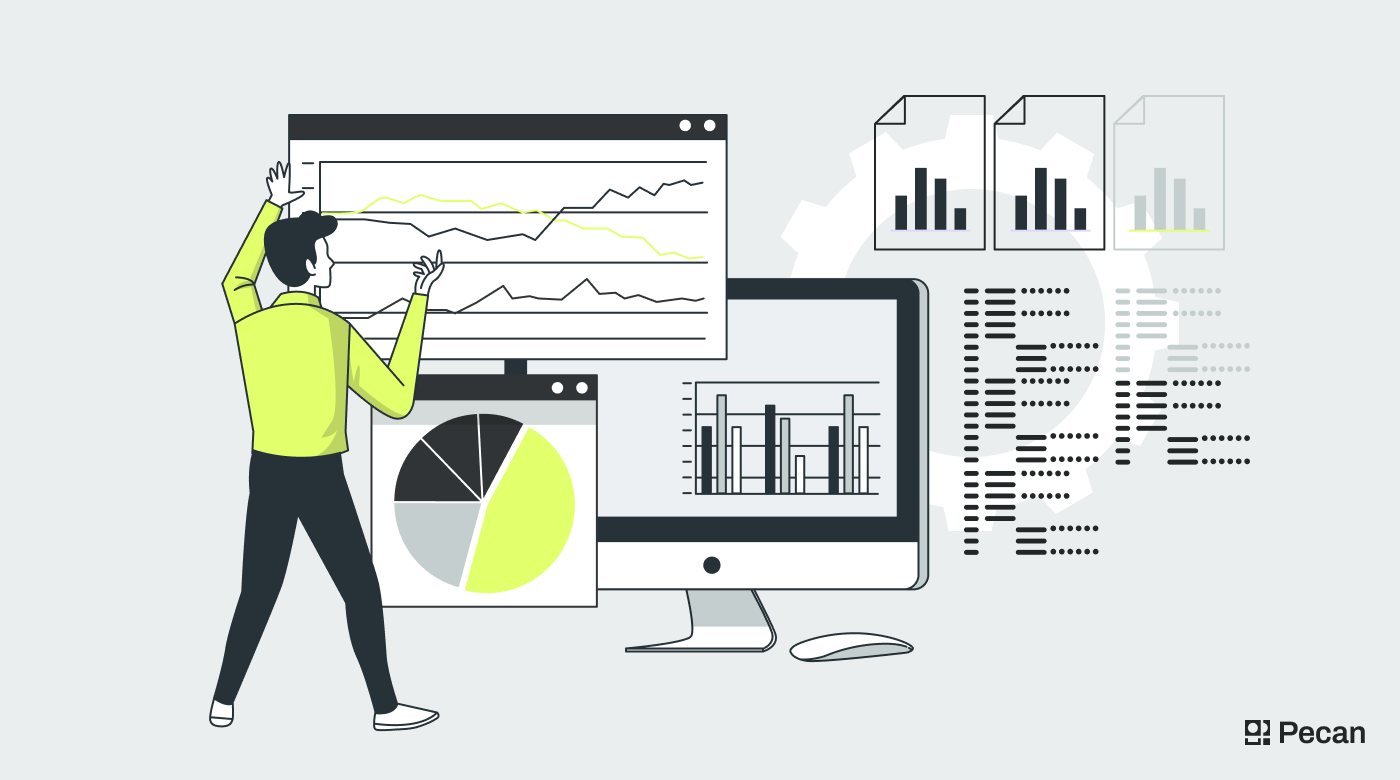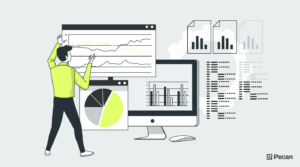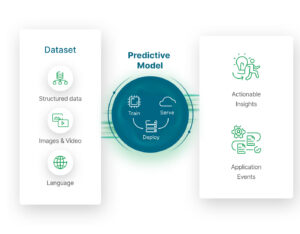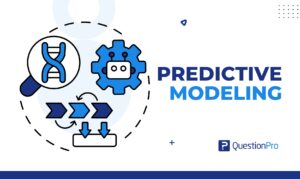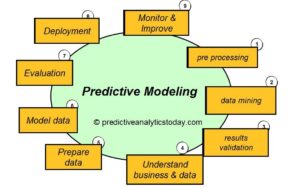Predictive Modeling: The Science of Forecasting the Future with Data
Introduction
In today’s digital age, businesses and researchers are flooded with data. The challenge is no longer about collecting information but about making sense of it. How can companies know which customer will churn, which machine might fail, or how the stock market will behave tomorrow? The answer lies in predictive modeling.
Predictive modeling is a branch of data science that uses historical data, statistical algorithms, and machine learning techniques to forecast future outcomes. From predicting diseases in healthcare to detecting fraud in banking, predictive modeling is shaping the way organizations make decisions.
In this article, we will dive deep into what predictive modeling is, how it works, its methods, applications, challenges, and future prospects.
What is Predictive Modeling?
At its core, predictive modeling is about using past data to predict future events. It involves creating a mathematical or computational model that learns patterns from data and uses them to forecast unseen situations.
For example:
-
An e-commerce platform predicts the probability of a customer making a purchase.
-
A bank estimates the risk of a borrower defaulting on a loan.
-
A hospital forecasts patient readmission rates based on medical history.
In all these cases, predictive models use inputs (features) such as age, purchase history, or medical records to estimate an output (target variable) like purchase likelihood, loan risk, or readmission probability.
How Predictive Modeling Works
The predictive modeling process generally follows these steps:
-
Problem Definition – Clearly outline what you want to predict (e.g., sales, fraud, churn).
-
Data Collection – Gather relevant historical data from databases, sensors, surveys, or external sources.
-
Data Preparation – Clean the data, handle missing values, and engineer features to improve model performance.
-
Model Selection – Choose an appropriate algorithm (linear regression, decision trees, neural networks, etc.).
-
Model Training – Use historical data to teach the model patterns and relationships.
-
Validation & Testing – Evaluate the model using metrics like accuracy, precision, recall, RMSE, or AUC.
-
Deployment – Integrate the model into real-world systems for decision-making.
-
Monitoring & Updating – Continuously track model performance and retrain it when needed.
This cycle ensures predictive models remain accurate, relevant, and reliable over time.
Techniques and Algorithms in Predictive Modeling
Predictive modeling combines traditional statistical methods with modern machine learning techniques. Let’s explore some of the most commonly used approaches:
1. Regression Models
Regression predicts continuous values. For example, predicting house prices or stock market returns.
-
Linear Regression – Assumes a linear relationship between input variables and the outcome.
-
Logistic Regression – Predicts categorical outcomes (yes/no, fraud/not fraud).
2. Decision Trees
Decision trees split data into branches based on rules. They are intuitive and widely used in business applications.
3. Random Forests
An ensemble of decision trees that improves accuracy by reducing overfitting.
4. Gradient Boosting (XGBoost, LightGBM, CatBoost)
Boosting algorithms combine multiple weak learners to build a strong predictor, often used in competitions and business applications.
5. Neural Networks and Deep Learning
Useful for highly complex data such as images, voice, and text. Deep learning models can detect intricate patterns without explicit feature engineering.
6. Support Vector Machines (SVM)
Great for classification problems where data is not linearly separable.
7. Bayesian Models
Use probability distributions to make predictions with uncertainty.
Each method has its strengths, and the choice depends on the nature of the data, business goals, and computational resources.
Applications of Predictive Modeling
Predictive modeling has penetrated nearly every industry. Here are some of its most impactful applications:
1. Business & Marketing
-
Customer churn prediction.
-
Personalized product recommendations.
-
Demand forecasting for supply chain optimization.
2. Healthcare
-
Predicting disease outbreaks.
-
Forecasting patient readmission rates.
-
Personalized medicine based on genetic data.
3. Finance & Banking
-
Credit risk scoring.
-
Fraud detection in transactions.
-
Stock market forecasting.
4. Retail & E-commerce
-
Dynamic pricing models.
-
Sales forecasting.
-
Predicting shopping trends.
5. Manufacturing & Industry
-
Predictive maintenance to prevent equipment failures.
-
Quality control through defect prediction.
6. Education
-
Predicting student dropout rates.
-
Recommending personalized learning paths.
7. Government & Public Policy
-
Predicting crime hotspots.
-
Forecasting unemployment trends.
-
Disaster management and early warning systems.
8. Sports & Entertainment
-
Predicting player performance.
-
Audience behavior analysis for streaming platforms.
The versatility of predictive modeling makes it one of the most valuable tools in modern data-driven decision-making.
Benefits of Predictive Modeling
Organizations leverage predictive modeling because of the clear competitive advantages it brings:
-
Better Decision-Making – Data-backed forecasts reduce reliance on intuition.
-
Cost Reduction – Anticipating failures and risks saves operational costs.
-
Improved Customer Experience – Personalized services increase customer loyalty.
-
Risk Management – Helps identify potential fraud, loan defaults, and safety issues.
-
Increased Efficiency – Automates forecasting and reduces human workload.
In short, predictive modeling allows companies to move from reactive strategies to proactive ones.
Challenges in Predictive Modeling
While predictive modeling is powerful, it comes with challenges:
1. Data Quality Issues
Garbage in, garbage out – poor quality data leads to inaccurate predictions.
2. Overfitting
Models that memorize training data perform poorly on real-world scenarios.
3. Interpretability
Complex models like deep learning are often black boxes, making it hard to explain predictions.
4. Bias and Fairness
Models may inherit biases present in historical data, leading to unfair outcomes.
5. Changing Environments (Concept Drift)
Models trained on old data may fail when real-world conditions change.
6. Scalability
Deploying predictive models at scale requires strong infrastructure.
7. Ethical Concerns
Using predictive models in areas like policing or hiring can lead to ethical dilemmas if not monitored properly.
Overcoming these challenges requires robust data governance, transparency, and continuous model monitoring.
Future of Predictive Modeling
The future of predictive modeling is being shaped by several emerging trends:
-
Integration with AI Agents – Predictive models will increasingly power autonomous AI agents that make real-time decisions.
-
Explainable AI (XAI) – Efforts are underway to make models more transparent and interpretable.
-
Edge Computing & IoT – Predictive models will run directly on smart devices, enabling real-time predictions.
-
AutoML & No-Code Solutions – Tools that automate model selection and training will democratize predictive modeling.
-
Quantum Computing – May significantly accelerate predictive modeling by handling massive data computations.
-
Ethical AI Frameworks – Regulations and best practices will guide fair and unbiased model development.
In the coming years, predictive modeling will evolve from being just a decision-support tool to becoming a decision-making engine embedded in every business process.
Real-World Examples of Predictive Modeling
-
Netflix uses predictive models to recommend shows and movies, boosting engagement.
-
Amazon applies predictive modeling for personalized shopping recommendations and inventory optimization.
-
Tesla uses predictive analytics for autonomous driving and predictive maintenance.
-
Airlines forecast ticket prices and maintenance schedules using predictive models.
-
Hospitals predict patient readmissions and optimize treatment plans.
These examples highlight how predictive modeling is already embedded in everyday life.
Best Practices for Building Predictive Models
-
Clearly define business objectives before model development.
-
Use high-quality and relevant data.
-
Choose models that balance accuracy and interpretability.
-
Validate models using multiple metrics.
-
Monitor models continuously to detect performance drops.
-
Ensure ethical use of predictive analytics with fairness checks.
Following these practices ensures predictive models are not only accurate but also trustworthy and sustainable.
Conclusion
Predictive modeling is more than a technical tool—it is a strategic capability that empowers organizations to forecast the future and act proactively. By leveraging statistical techniques, machine learning, and AI, predictive models help businesses and researchers reduce uncertainty, optimize operations, and deliver personalized experiences.
However, predictive modeling is not without challenges. Issues of bias, interpretability, and ethical concerns must be addressed responsibly. The future lies in transparent, ethical, and AI-powered predictive systems that are seamlessly integrated into our daily lives.
As technology advances, predictive modeling will become even more accurate, accessible, and impactful. In a world where data grows exponentially, the ability to predict the future will remain one of the most valuable assets.
https://bitsofall.com/https-www-yourwebsite-com-large-language-models-llms-engines-behind-modern-ai/
Internet of Things (IoT): Connecting the World of Smart Devices
Robotics and Computer Vision: The Future of Intelligent Machines

